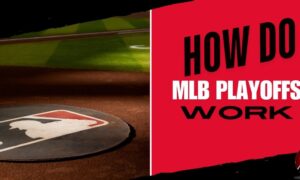Today I want to give a bit of a lesson on how player options work in the MLB to the best of my recollection. What prompted me to this is that the Cardinals sent a few players down to the minor league camp this week and Zack Cox was one of those and his arbitration clock starting ticking when they exercised an option on him for it.
What are Player Options?
When a player is first added to the 40 man roster, he is given a total of three option years. While they are often referred to as options, this is a little misleading. In a given option year, a player may be sent down to the minors and recalled as often as the team pleases while only using one option. In other words, an option is a season during which the club may to move him to and from the minor leagues without exposing him to other clubs.
Basically, options are another measure of control that a team has on its prospects–one that allows a club to send its prospects that need a little seasoning or are blocked at the major league level down to the minors, where they can get in some good at-bats and work on their issues. There are a couple of exceptions to this rule, however.
One of these exceptions is that a player optioned to the minor leagues may not be recalled for at least 10 days, unless the club places a player from the 25 man active roster on the disabled list during the 10-day window, in which case the prospect may be recalled. Another is that a player with 5 years of Major League service may not be sent to the minor leagues on an optional assignment without his consent.
Thus, teams don’t have options on some arbitration eligible players due to their service time, as well as all players eligible for free agency. These players are usually designated for assignment, a topic that will be explored later in the waivers session. Let’s just look at the prospects for now.
After his three option years are exhausted, a player is out of options. Then he must clear waivers before he may be sent to the minors again.
An option year is used:
- If a player is on the 40-man roster in spring training but optioned to the minors before the season begins.
- If a player is sent down to the minors during the regular season–even if a player broke camp with the team.
However, an option year is NOT used:
- If a player is not sent to the minors during a year (obviously).
- If a player’s optional assignment(s) to the minors total less than 20 days in one season. However, this is very unlikely to happen as a minimum assignment is ten days. I’m not clear on if this rule also applies to when a player is sent to the minors immediately following Spring Training, but all indications are that it does.
- If they are called up in September, because as I mentioned above, during September the 40 man roster is technically the active roster.
Also, in very rare cases a player may be eligible for a fourth option year if he has been optioned in three seasons but does not yet have five full seasons of professional experience–where a full season is defined as being on an active pro (major or minor) roster for at least 90 days in a season–thus short season leagues like the Pioneer and Northwest leagues don’t count as a full season for players.
This exception is really quite rare though, as teams would have to sign a player to a major league contract immediately (like Matt Wieters or Buster Posey was, I believe), then keep that player in the minors for three full years. It doesn’t happen often, as most players are signed to a major league contract when they’re about ready to contribute on the major league level.
This is it in a nutshell. Keep your eyes and ears primed and when your Buffalo Wild Wings friends start talking about baseball players and their options, you can join in the conversation.









